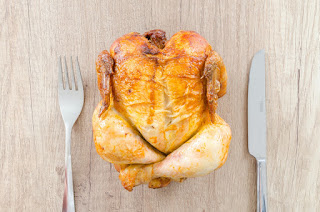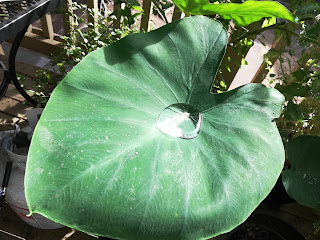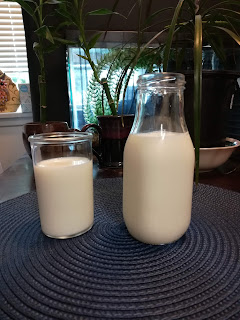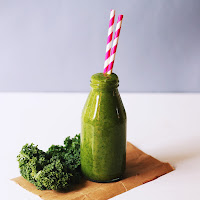Whether anybody likes to admit it or not, we Americans are energy hogs. As a maintenance tech, it seemed like every apartment I walked into had every electrical outlet in use, complete with surge protectors. I've lost count of how many times I had to explain that there was nothing wrong with a person's electrical lines. They were simply drawing more power from a single circuit than it could handle. When that happens- Zzzt! The power goes out.
Quit overloading the circuits!
Obviously, the above situation costs a great deal when energy bills come around, but that's not where you find a home's worst energy consumption. And don't worry, I'm not going to tell you to wrap up your water heater, or buy a new one, either... even though it would help.
Instead, let's talk about the kitchen.
In particular, I want to talk about how we prepare food. Since gas stoves/ovens use natural gas to heat, I'm not going to talk about them... it's pretty obvious that they're not doing the Earth any favors. Plus, my professional and personal experience mostly deals with electric.
Electric kitchen ranges draw insane amounts of power to do simple tasks like boiling water for ramen. Now, I haven't gotten rid of my oven, and I still use it sometimes. I've simply reduced my usage.
Significantly.
So how did I reduce my own electric bill, thereby saving money and reducing my carbon footprint at the same time?
It was easier than you think, and I'll tell you how (and why) to do it.
Use a modern pressure cooker.
Don't go and grab the pressure cooker that your grandfather stored in the garage 2 decades ago. Those old ones are dangerous.
Instead, get a modern pressure cooker. While I have an Instant Pot, there are many others that are just as good. These modern beauties reduce cooking time and consume less energy than an oven or stovetop. Sometimes they even produce better results for those of us don't have a culinary degree.
Their energy savings are pretty significant. As an example, I'll do the math for both an electric oven and my 6-quart Instant Pot. The calculation is as follows:
(Appliance wattage) / (number of hours in use) = watt hours per day
(watt hours per day) / 1000 = Kilowatt hours per day, or kWh
If we want the monthly amount of energy used, though, we must take it one step further.
kWh * 30days in a month = kWh per month
In an oven, it takes me an hour to bake a 5 pound chicken, plus an extra 15 minutes for pre-heating.
With my pressure cooker, the same chicken cooks for 25 minutes with a 15 minute pressure build-up time. There's also a 5 minute quick-release of pressure (I get impatient).
To do the calculations, I'll use the average oven wattage of 2400 watts. My Instant Pot uses 1000 watts. I'll also assume that my cook times are the same every day for a full month for both devices.
When plugging all of these numbers into the equation, we get a total of 57.6 kWh when using the oven for a full month. The pressure cooker uses only 40 kWh each month.
As you can see, this is an energy savings of roughly 31%.
Or even better, use a microwave.
I know what you're thinking... microwaves are for reheating, or for quick, tiny, pre-packaged foods. You used to be right.
But not anymore.
Today you can find countless microwave recipes that are both tasty and healthy. The microwave is faster than either the oven or the pressure cooker. In fact, a small one uses approximately 600watts, so you're talking about mega-savings.
Of course, a small microwave won't cook a chicken, but you win some and lose some, right?
But!
Perhaps you're really not interested in changing your cooking method.
No worries. you can still save energy and money by taking a few more quick steps.
Quit opening that oven door!
I know how difficult this can be, especially if you don't have a window on your oven. My own is like this. But try to hold back.
You see, every time you open that oven door, you decrease the oven temperature. This decrease can be as much as 150 degrees! That means you need to wait even longer to eat, because the oven needs to get back up to the proper temperature.
So please, for the sake of your hungry family, just leave it closed.
Clean your oven.
A clean oven is a happy oven. No, really! Cleaning an oven makes the heat distribute more evenly. The result? Better energy efficiency.
And while you're at it, keep the burner pans clean, as well. They reflect heat back at your pan, helping your food cook faster. Score!
Match the proper pan size to the correct burner on your stovetop.
This is a big one that many people never consider. If you use a large burner to heat a small pan, you're wasting more energy than necessary. Much of the heat goes out into the surrounding air, rather than just the pan.
Use your lids.
While you can't really do this if you're frying up something crispy, using the lid helps you build up heat faster, and retain that heat, as well. In fact, I'm always able to keep water boiling after placing a lid on a pot and reducing the heat to medium. Think about what that means for energy reduction!
Reducing our personal carbon footprint is so easy!
Not only are these all simple tasks, they also save you a great deal of money in the long run. Some even save you a significant amount of time.
Of course, there are many more ways to reduce our energy consumption in the kitchen. I've only listed a fragment of them. Add your own in the comments below and help make us all a little greener!













